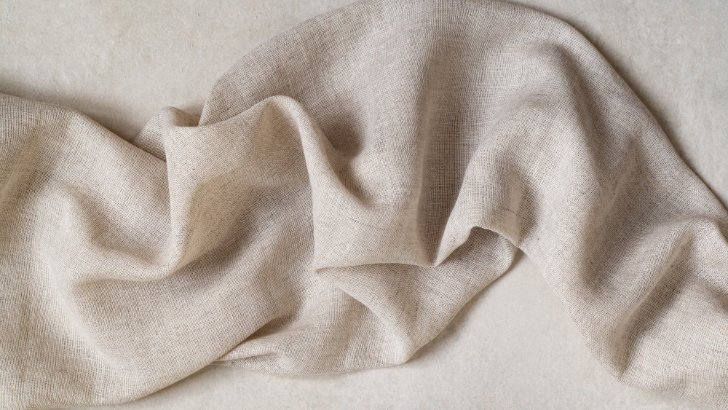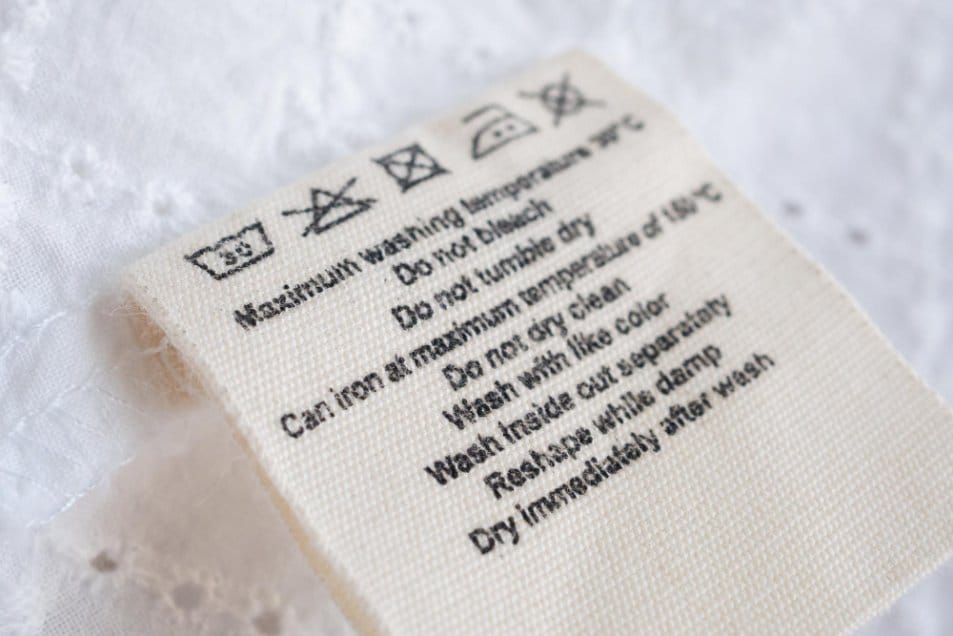Understanding the environmental impact and benefits of organic cotton in sustainable fashion
Table of Contents
- Understanding Organic Cotton and Its Meaning
- Organic Cotton vs Conventional Cotton
- Benefits of Organic Cotton for Health and Environment
- Global Certification Standards and Trust
- Regenerative Cotton: The Next Evolution
- Organic Cotton in Circular Fashion Systems
- Supply Chain Transparency and Traceability
- Leading Organic Cotton Brands in 2025
- Comprehensive Fabric Comparisons
- How to Wash and Care for Organic Cotton
- Common Questions About Organic Cotton
- Conclusion
Understanding Organic Cotton and Its Meaning
Organic cotton represents a fundamental shift in how cotton is grown, processed, and brought to market. Unlike conventional cotton farming that relies heavily on synthetic chemicals and genetic modification, organic cotton uses natural methods that protect both environmental health and human wellbeing.
What is Organic Cotton?
Organic cotton is grown using methods and materials that maintain soil fertility, ecosystem health, and biodiversity without the use of synthetic pesticides, herbicides, or genetically modified organisms (GMOs). The production also prohibits the use of toxic chemicals in processing.
The meaning of organic cotton extends beyond just farming practices. It encompasses a holistic approach that considers the entire lifecycle of the fabric, from seed to finished product. This includes fair labor practices, environmental stewardship, and sustainable processing methods.
Understanding what makes organic cotton different requires examining its growing process compared to conventional methods. While traditional cotton farming consumes 18% of global pesticides despite using only 2.5% of farmland, organic cotton farmers use crop rotation, beneficial insects, and natural pest management to maintain healthy crops.
Organic Cotton vs Conventional Cotton: Key Differences
The differences between organic and conventional cotton are substantial, affecting everything from environmental impact to fabric quality. Understanding these distinctions helps consumers make informed choices about their clothing purchases.
| Aspect | Conventional Cotton | Organic Cotton |
|---|---|---|
| Farming Methods | Synthetic pesticides, monocropping | Natural pest control, crop rotation |
| Chemical Use | 16-25% of global pesticides | Zero persistent toxins |
| Water Usage | 2,700 liters per t-shirt | 91% less water consumption |
| Seed Type | Genetically engineered | Non-GMO, natural variants |
| Soil Health | Depletion and contamination | Improved fertility and biodiversity |
| Energy Demand | High fossil fuel dependence | 62% less energy required |
Is There a Difference Between 100% Cotton and 100% Organic Cotton?
Yes, there are significant differences between 100% cotton and 100% organic cotton, despite both being pure cotton fiber. The key distinction lies in how the cotton is grown and processed:
- Growing methods: 100% cotton can be grown conventionally with pesticides, while 100% organic cotton must be grown without synthetic chemicals
- Processing standards: Organic cotton follows stricter processing guidelines that prohibit harmful chemicals
- Certification requirements: Organic cotton requires third-party verification, while regular 100% cotton does not
- Environmental impact: Organic cotton has a significantly lower environmental footprint
Water Management and Environmental Impact
Conventional cotton production drains massive water resources. Producing one traditional cotton t-shirt requires 2,700 liters of water – enough for one person to drink for three years. In contrast, organic cotton farming relies primarily on rainwater, with 80% of organic cotton grown using rain-fed systems.
This water efficiency becomes even more critical when considering global water scarcity. Cotton farming practices that conserve water help protect aquatic ecosystems from depletion and contamination.
Benefits of Organic Cotton for Health and Environment
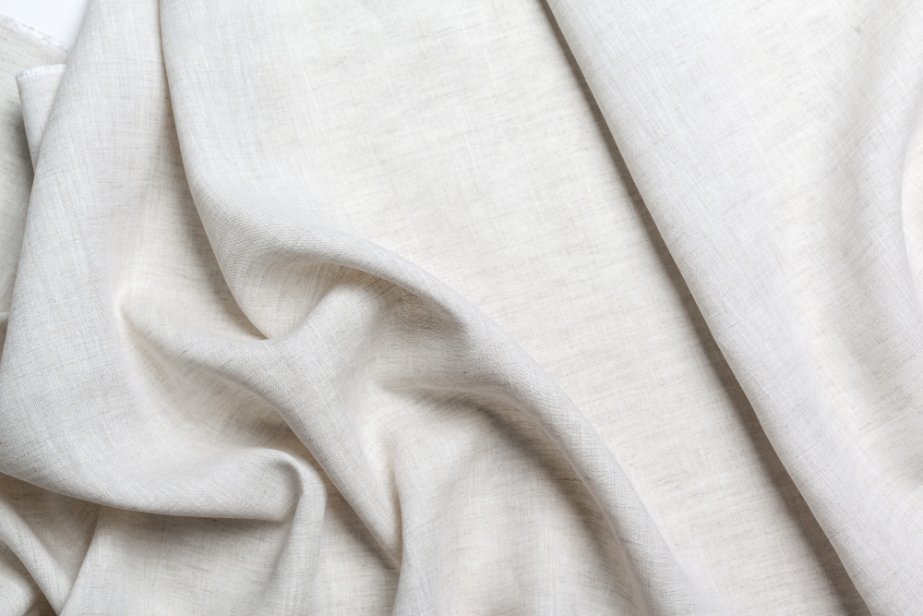
Organic cotton offers numerous benefits that extend beyond personal comfort to global environmental health. These advantages make it an increasingly popular choice for conscious consumers.
Environmental Benefits
- 91% less water usage than conventional cotton
- Zero persistent pesticide contamination
- Improved soil health and biodiversity
- 62% lower energy consumption
- Reduced carbon footprint
- Protection of waterways from chemical runoff
Personal Health Benefits
- No chemical residue on fabric
- Reduced allergy and skin irritation risk
- Better breathability and comfort
- Naturally hypoallergenic properties
- Safer for sensitive skin
- No exposure to carcinogenic pesticides
Is Organic Cotton Better for Your Skin?
Organic cotton is significantly better for your skin, particularly for people with sensitivities. Conventional cotton processing leaves chemical residues that can trigger skin reactions in approximately 12% of sensitive wearers. These residues come from:
- Pesticide and herbicide treatments during growing
- Chemical bleaching and dyeing processes
- Fungicide-treated seeds used in conventional farming
- Synthetic finishing treatments
Organic cotton eliminates these irritants, making it ideal for people with sensitive skin conditions like eczema, dermatitis, or general chemical sensitivities.
Is Organic Cotton More Breathable?
Organic cotton maintains the natural breathability of cotton fiber while often being more breathable than conventionally processed cotton. This improved breathability comes from:
- Less chemical processing: Fewer harsh treatments preserve the fiber’s natural structure
- Natural finishing: Organic processing maintains the cotton’s moisture-wicking properties
- Preserved fiber integrity: Gentle processing keeps the natural pore structure intact
- No synthetic coatings: Chemical-free processing prevents blocking of natural air flow
This makes organic cotton particularly good for summer weather and hot climates, where breathability is essential for comfort.
Is Organic Cotton Good for Summer and Hot Weather?
Organic cotton is excellent for summer and hot weather conditions. The natural fiber structure provides superior breathability compared to synthetic materials, allowing air to circulate freely around the body. This natural ventilation helps regulate body temperature and reduces overheating.
Key advantages for hot weather include:
- Moisture absorption: Cotton naturally wicks moisture away from skin
- Air circulation: Open fiber structure promotes airflow
- Comfort: Soft texture prevents chafing and irritation in heat
- UV protection: Dense weave provides natural sun protection
- Easy care: Machine washable for frequent summer washing needs
Is Buying Organic Cotton Worth It?
Buying organic cotton is generally worth the investment for several reasons:
- Health benefits: No exposure to chemical residues that can irritate sensitive skin
- Durability: Often lasts 2-3 times longer than conventional cotton due to less chemical damage to fibers
- Environmental impact: Supports farming practices that protect water sources and biodiversity
- Social responsibility: Ensures fair wages and safe working conditions for farmers
- Long-term value: Higher resale value and reduced replacement costs
While organic cotton costs 20-30% more initially, the superior durability and health benefits often justify the price difference for conscious consumers.
Are Organic Clothes Worth It?
Organic clothes offer value beyond the initial purchase price. They provide peace of mind for families, especially those with young children or sensitive skin conditions. The investment supports sustainable farming practices that benefit entire communities and ecosystems.
Consider organic cotton clothing when:
- You have sensitive skin or allergies
- You’re shopping for baby or children’s clothing
- You prioritize environmental sustainability
- You prefer higher-quality, longer-lasting garments
- You want to support ethical labor practices
Global Certification Standards and Trust
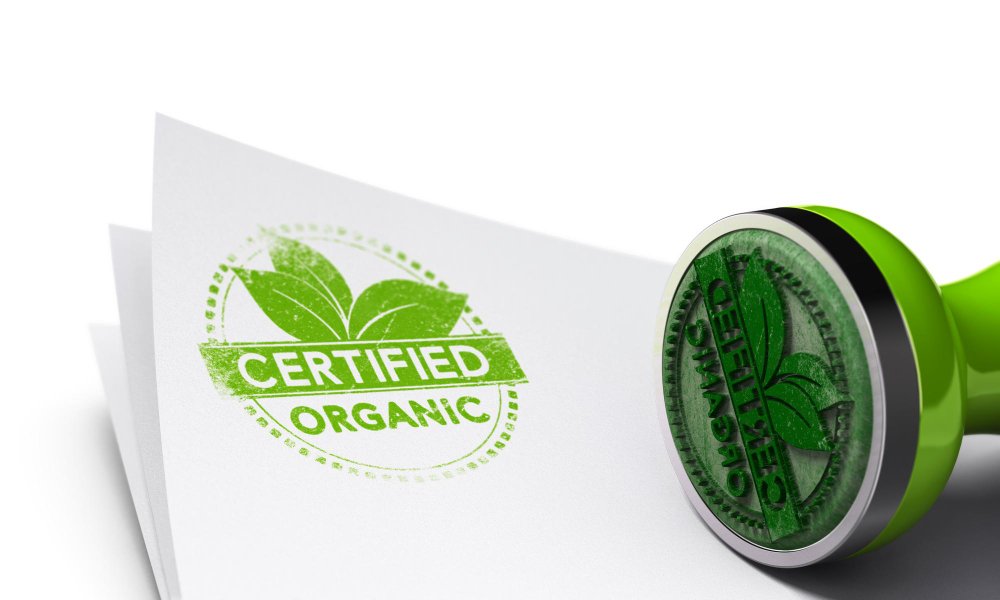
In a market filled with green claims, third-party certification separates authentic organic cotton from misleading marketing. Understanding these certifications helps consumers make informed purchasing decisions.
Global Organic Textile Standard (GOTS)
GOTS represents the gold standard for organic textile certification. Developed by organizations from four continents, including the US-based Organic Trade Association and Germany’s IVN, GOTS covers both ecological and social criteria throughout the production chain.
What Are the Rules for Organic Cotton?
GOTS certification requires:
- Minimum 70% certified organic fibers
- Prohibition of hazardous chemicals in processing
- Fair wages and safe working conditions
- Environmental criteria for processing facilities
- Annual independent audits by certified agencies
Other Key Certification Programs
| Certification | Focus Area | Requirements |
|---|---|---|
| GOTS | Full supply chain oversight | 70%+ organic fibers, social criteria, chemical restrictions |
| OCS (Organic Content Standard) | Material tracking only | Organic content verification without labor requirements |
| OEKO-TEX | Chemical safety testing | Tests for harmful substances in textiles |
| Fair Trade Certified | Social responsibility | Fair wages, safe conditions, community development |
When shopping for organic cotton products, look for these recognized certification symbols. They represent verified reductions in chemical use, water waste, and worker exploitation.
Regenerative Cotton: The Next Evolution
Regenerative cotton represents the newest advancement in sustainable farming, going beyond organic to actively restore ecosystems. Major brands like The North Face and Allbirds have committed to using only regenerative cotton by 2025.
Understanding Regenerative Agriculture
Regenerative cotton farming focuses on:
- Soil restoration: Building organic matter and microbial diversity
- Carbon sequestration: Capturing atmospheric CO2 in soil
- Biodiversity enhancement: Supporting diverse plant and animal ecosystems
- Water cycle improvement: Increasing soil water retention capacity
- Ecosystem services: Supporting natural pollination and pest control
What is the Difference Between Better Cotton and Organic Cotton?
Better Cotton and organic cotton represent different approaches to sustainable farming:
- Better Cotton: Focuses on improving conventional farming practices through water efficiency, soil health, and biodiversity protection. It’s less restrictive than organic standards and allows some synthetic inputs.
- Organic Cotton: Prohibits all synthetic pesticides, herbicides, and GMOs. Requires third-party certification and follows strict processing standards.
- Scope: Better Cotton is a training program for farmers, while organic cotton is a certification standard for the entire supply chain.
- Market approach: Better Cotton aims to improve mainstream cotton production, while organic cotton creates a premium market segment.
Organic Cotton in Circular Fashion Systems

Circular fashion principles transform how organic cotton products are designed, used, and recycled. This approach minimizes waste while maximizing the value of sustainable materials.
Design for Circularity
Circular organic cotton products are designed with their entire lifecycle in mind:
- Durability: Built to last multiple years of regular use
- Repairability: Easy to mend and maintain at home
- Recyclability: Made from single materials that can be easily processed
- Biodegradability: Natural decomposition when the product reaches end-of-life
Take-Back and Resale Programs
Many organic cotton brands now offer circular services:
- Clothing take-back: Brands collect worn items for recycling or refurbishment
- Resale platforms: Companies create marketplaces for pre-owned organic cotton items
- Repair services: In-store mending to extend garment life
- Rental programs: Access to organic cotton clothing without ownership
Circular Economy Market Growth
The circular fashion market is projected to reach $13.94 billion by 2032, growing at 9.0% annually. Social media posts about preloved fashion have increased 70% in the past six months, showing growing consumer interest in circular practices.
Supply Chain Transparency and Traceability
Modern consumers want to know where their organic cotton comes from and how it’s processed. Technology now makes it possible to trace garments from farm to finished product.
Blockchain Technology in Organic Cotton
Blockchain systems allow complete supply chain tracking:
- Farm verification: Confirming organic farming practices at the source
- Processing tracking: Monitoring each step of textile production
- Chemical verification: Ensuring no prohibited substances are used
- Labor monitoring: Verifying fair working conditions throughout the chain
- Environmental impact: Measuring water use, energy consumption, and carbon footprint
This transparency helps consumers verify sustainability claims and supports brands committed to authentic organic practices. Learn more about different types of fabrics and their transparency standards.
Leading Organic Cotton Brands in 2025
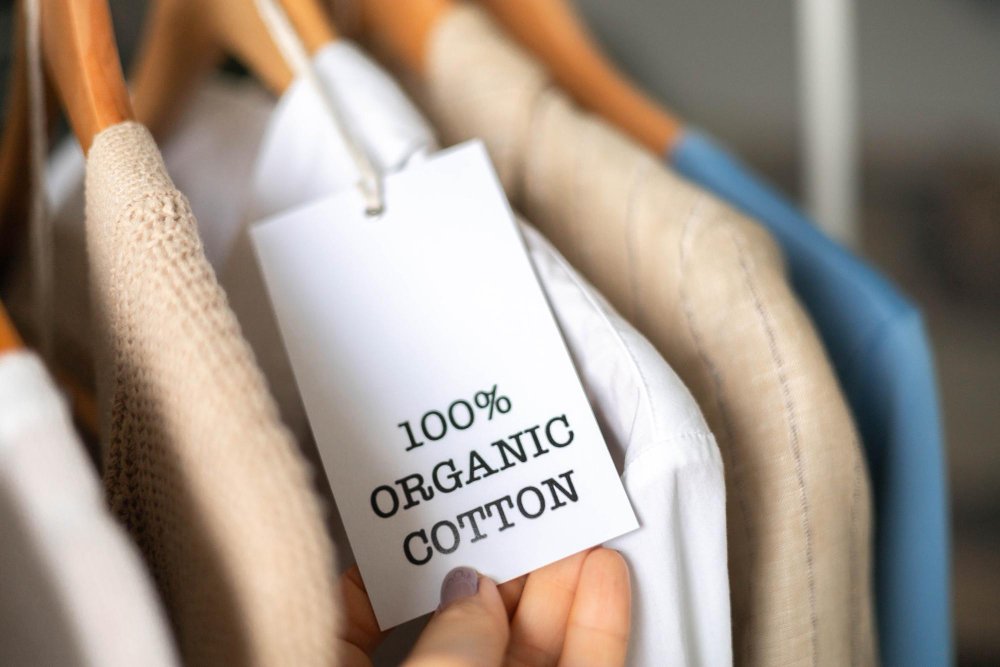
Several brands are leading the organic cotton movement, offering high-quality products with verified sustainability credentials.
Premium Organic Cotton Brands
| Brand | Certification | Price Range | Specialty |
|---|---|---|---|
| Organic Basics | GOTS, OEKO-TEX | $$ – $$$ | Essentials and underwear |
| Pact | GOTS Certified | $ – $$ | Affordable basics |
| MATE the Label | GOTS, Fair Trade | $$ – $$$ | Loungewear and activewear |
| Beaumont Organic | GOTS Certified | $$$ – $$$$ | Contemporary luxury |
What to Look for in Organic Cotton Brands
When choosing organic cotton brands, consider:
- Certification transparency: Clear display of GOTS or OCS certification
- Supply chain information: Details about farming and manufacturing locations
- Care instructions: Proper guidance for maintaining organic cotton items
- Durability guarantees: Brands confident in their product quality
- End-of-life services: Take-back or recycling programs
Comprehensive Fabric Comparisons
Understanding how organic cotton compares to other sustainable fabrics helps consumers make the best choice for their specific needs.
Organic Cotton vs Other Sustainable Materials
| Fabric | Water Usage | Durability | Breathability | Cost |
|---|---|---|---|---|
| Organic Cotton | Low (rain-fed) | High | Excellent | Moderate |
| Hemp | Very Low | Very High | Good | Moderate |
| Linen | Low | High | Excellent | Higher |
| Bamboo | Very Low | Moderate | Good | Lower |
| Recycled Cotton | Minimal | Moderate | Good | Lower |
Is Bamboo Better Than Organic Cotton?
The comparison between bamboo and organic cotton depends on specific priorities:
Bamboo Advantages
- Faster growth rate (harvest in 3-5 years)
- Requires less water than cotton
- Natural antibacterial properties
- Softer initial feel
- Higher yield per acre
Organic Cotton Advantages
- More established organic certification systems
- Better durability and longevity
- Wider availability of certified organic options
- Less chemical processing required
- Established recycling infrastructure
- Better heat resistance
For most consumers, organic cotton offers the best balance of sustainability, durability, and performance, especially for everyday clothing items.
Is Organic Cotton Better Than Polyester?
Organic cotton significantly outperforms polyester in environmental and health metrics:
- Biodegradability: Organic cotton decomposes naturally, while polyester persists for centuries
- Microplastic pollution: Cotton doesn’t shed microplastics during washing
- Breathability: Natural fibers allow better air circulation than synthetic materials
- Chemical exposure: Fewer chemicals used in organic cotton production
- Renewable source: Cotton grows annually, while polyester uses finite petroleum resources
However, polyester offers advantages in specific applications like athletic wear due to its moisture-wicking properties and wrinkle resistance. For general clothing needs, organic cotton provides superior comfort and environmental benefits. Learn more about the detailed cotton vs polyester comparison.
How to Wash and Care for Organic Cotton

Proper care extends the life of organic cotton garments while maintaining their sustainable benefits. Understanding how to wash organic cotton correctly preserves the fabric’s natural properties and your investment in sustainable fashion.
Should You Wash Organic Cotton After Buying?
Yes, you should wash organic cotton items before first wear. This initial wash removes:
- Manufacturing dust and residue
- Natural oils from cotton processing
- Any handling residue from shipping and storage
- Loose fibers that may cause initial shedding
Essential Washing Guidelines
Temperature: Use warm water (30-40°C) for most organic cotton items
Detergent: Choose eco-friendly, biodegradable detergents
Loading: Don’t overload the machine to allow proper water circulation
Sorting: Separate colors to prevent bleeding
Does 100% Organic Cotton Shrink?
Yes, 100% organic cotton can shrink, particularly during the first wash. Organic cotton typically shrinks 3-5% in length and width when exposed to heat and moisture. To minimize shrinkage:
- Use cool or warm water instead of hot
- Avoid high-heat drying
- Remove items while slightly damp
- Air dry when possible
- Pre-shrink fabric before sewing if making garments
Can You Use Fabric Softener on Organic Cotton?
It’s best to avoid fabric softener on organic cotton. Fabric softeners can:
- Reduce the fabric’s natural absorbency
- Create chemical buildup that affects breathability
- Interfere with organic cotton’s natural softening process
- Add unnecessary chemicals to an otherwise natural fabric
How to Make Organic Cotton Softer
Organic cotton naturally becomes softer with each wash and wear. To enhance softness:
- White vinegar: Add 1/2 cup to the rinse cycle occasionally
- Tennis balls: Add clean tennis balls to the dryer for natural agitation
- Proper drying: Don’t over-dry; remove while slightly damp
- Brushing: Gently brush fabric with a soft-bristled brush
Can Organic Cotton Be Tumble Dried?
Yes, organic cotton can be tumble dried, but with precautions:
- Low heat: Use the lowest heat setting to prevent shrinkage
- Remove early: Take items out while slightly damp
- Check regularly: Don’t over-dry as it can make fabric stiff
- Air dry when possible: Line drying is gentler and more energy-efficient
For detailed fabric care instructions, visit our comprehensive cotton care guide.
Common Questions About Organic Cotton
While organic cotton offers many benefits, it does have some limitations:
- Higher cost: Typically 20-30% more expensive than conventional cotton
- Limited availability: Only 1% of global cotton production is organic
- Land use: Requires 28% more land per yield than conventional methods
- Color limitations: Natural dyes offer fewer color options
- Processing time: Longer production cycles due to natural methods
Fresh organic cotton should not have any unpleasant smell. Any odor typically indicates:
- Improper storage or moisture exposure
- Low-quality processing methods
- Contamination during shipping
High-quality organic cotton has a clean, natural scent. If you notice any chemical or musty odors, contact the manufacturer.
Yes, 100% organic cotton is highly breathable. The natural fiber structure allows air to circulate freely, making it excellent for:
- Hot weather clothing
- Athletic wear base layers
- Bedding and sleepwear
- Baby clothing
Organic processing methods often preserve more of the cotton’s natural breathability compared to heavily processed conventional cotton.
Pure organic cotton has minimal natural stretch. However, organic cotton can be made stretchy through:
- Knit construction: Jersey and rib knits provide stretch through structure
- Organic cotton blends: Mixed with a small percentage of organic elastane
- Mechanical stretch: Special weaving techniques that create stretch
Look for organic cotton blends with 2-5% elastane for comfortable stretch while maintaining sustainability benefits.
Organic cotton often lasts longer than conventional cotton due to:
- Stronger fibers: Less chemical damage during processing
- Better construction: Higher quality manufacturing standards
- Natural integrity: Preserved fiber strength from gentle processing
- Reduced chemical breakdown: No synthetic treatments that weaken fibers over time
With proper care, organic cotton garments can last 2-3 times longer than fast fashion alternatives.
Organic cotton can be whitened, but not with chlorine bleach. GOTS certification prohibits chlorine bleaching and other harmful chemicals. Instead, organic cotton is whitened using:
- Hydrogen peroxide: An oxygen-based bleaching agent that’s environmentally safer
- Enzyme treatments: Natural enzymes that help achieve whiteness without harsh chemicals
- Sodium hypochlorite alternatives: Less toxic whitening compounds
This process maintains the organic integrity while achieving the desired color without environmental harm.
Organic cotton wrinkles similarly to conventional cotton, so ironing may be desired for a crisp appearance. However, you can minimize ironing by:
- Removing items from the dryer while slightly damp
- Hanging garments immediately after washing
- Using medium heat settings when ironing is necessary
- Choosing wrinkle-resistant organic cotton blends
Many organic cotton items, especially casual wear, look fine without ironing due to the relaxed, natural appearance of the fabric.
Washing can reduce some surface pesticide residues on conventional cotton clothing, but it cannot eliminate all chemical traces. Pesticides become embedded in the fiber structure during growing and processing. This is why choosing organic cotton from the start is more effective than trying to wash chemicals out of conventional cotton.
Pre-washing new conventional cotton items helps remove some surface residues, but organic cotton eliminates this concern entirely by avoiding pesticides during cultivation.
100% organic cotton offers maximum benefits including:
- Purity: No synthetic fiber blends that might irritate skin
- Biodegradability: Completely natural decomposition
- Breathability: Maximum airflow and moisture management
- Durability: Strong natural fibers that improve with age
- Sustainability: Supports organic farming practices
- Hypoallergenic: Ideal for sensitive skin conditions
100% organic cotton means the entire fabric consists of organic cotton fibers with no synthetic or conventional cotton blends. This designation requires:
- All cotton grown without synthetic pesticides or fertilizers
- Organic certification for the entire supply chain
- No genetic modification of cotton plants
- Processing without prohibited chemicals
- Compliance with organic textile standards
“Pure cotton” typically means 100% cotton fiber content but doesn’t specify how the cotton was grown. It could be conventional cotton grown with pesticides. “Organic cotton” specifically refers to cotton grown using organic farming methods without synthetic chemicals, regardless of whether it’s blended with other fibers.
Key differences:
- Pure cotton: Fiber content only, no farming method specification
- Organic cotton: Specific farming and processing standards
- Certification: Organic cotton requires third-party verification
- Environmental impact: Organic cotton has lower ecological footprint
“Green cotton” is often a marketing term that can refer to various eco-friendly cotton practices, while “organic cotton” has specific certification requirements. Green cotton might include:
- Reduced pesticide use (but not elimination)
- Water-efficient farming
- Recycled cotton content
- Sustainable processing methods
Organic cotton must meet strict GOTS or similar certification standards, making it more regulated and verifiable than general “green” cotton claims.
Organic cotton sheets provide superior sleep comfort and health benefits:
- Chemical-free sleep environment: No pesticide residues against skin for 6-8 hours nightly
- Better breathability: Natural temperature regulation throughout the night
- Durability: High-quality organic cotton sheets last years longer
- Hypoallergenic: Ideal for people with allergies or sensitive skin
- Improved sleep quality: Comfortable, natural fibers promote better rest
Given the amount of time spent sleeping, organic cotton bedding provides excellent value for health-conscious consumers.
Conclusion
Organic cotton represents more than just a fabric choice. It embodies a commitment to environmental stewardship, human health, and sustainable fashion practices. As we move through 2025, the importance of these choices becomes increasingly clear.
Key Takeaways
Environmental Impact: Organic cotton uses 91% less water and 62% less energy than conventional cotton while eliminating persistent pesticides from our ecosystem. This dramatic reduction in environmental impact makes every organic cotton purchase a meaningful vote for ecological health.
The shift toward organic cotton addresses critical global challenges. With conventional cotton farming using 16-25% of global pesticides on just 2.5% of farmland, choosing organic alternatives directly supports farming practices that protect waterways, preserve soil health, and maintain biodiversity.
Health and Personal Benefits
For consumers, organic cotton offers immediate personal benefits. The absence of chemical residues makes it ideal for sensitive skin, while its superior breathability provides comfort in various climates. The natural softening process means organic cotton garments actually improve with each wash and wear.
Families with young children particularly benefit from organic cotton’s safety profile. With no exposure to the seven carcinogenic pesticides commonly used in conventional cotton production, organic cotton provides peace of mind for parents choosing safe fabrics for children.
Economic Considerations
While organic cotton typically costs 20-30% more initially, the long-term value proposition is compelling. Higher durability means fewer replacements, while the growing resale market for organic cotton items helps retain value. The price premium also supports fair wages for farmers and workers throughout the supply chain.
Future Trends and Innovations
The organic cotton industry continues evolving with exciting developments:
- Regenerative cotton: Moving beyond sustainability to ecosystem restoration
- Blockchain transparency: Complete traceability from farm to consumer
- Circular fashion integration: Design for recyclability and extended product life
- Innovative processing: New methods that further reduce environmental impact
Major brands’ commitments to organic and regenerative cotton by 2025 signal a fundamental shift in fashion industry priorities. This creates more options for consumers while driving continued innovation in sustainable textile production.
Practical Recommendations
For consumers ready to embrace organic cotton:
- Start with basics: Replace frequently worn items like t-shirts and underwear with organic cotton alternatives
- Verify certifications: Look for GOTS or OCS labels to ensure authenticity
- Invest in quality: Choose well-made pieces that will last for years
- Care properly: Follow washing guidelines to maximize garment lifespan
- Support transparency: Choose brands that openly share their supply chain information
- Consider blends: Organic cotton mixed with small amounts of other sustainable fibers can offer enhanced performance
Making the Transition
You don’t need to replace your entire wardrobe immediately. Focus on items you wear most frequently and replace conventional cotton pieces as they wear out. This gradual approach makes the transition more affordable while still supporting sustainable practices. Use our interactive tools to calculate your potential environmental impact and cost savings.
The Bigger Picture
Choosing organic cotton connects individual consumer decisions to global environmental health. Every organic cotton purchase supports farming practices that could be scaled globally, creating a more sustainable textile industry for future generations.
The journey toward sustainable fashion requires informed choices, and organic cotton provides an accessible entry point for most consumers. As certification standards continue improving and innovative farming practices expand, organic cotton will likely become even more sustainable and widely available.
Understanding essential cotton facts helps consumers make informed decisions about all cotton purchases, whether conventional or organic. This knowledge empowers better choices that align with personal values and environmental priorities.
The future of fashion depends on consumers who understand the true cost of their clothing choices. Organic cotton offers a proven path toward more sustainable consumption while maintaining the comfort, versatility, and durability that make cotton the world’s most popular natural fiber.
Final Recommendation: Consider organic cotton for your next clothing purchase. Start with one high-quality piece and experience the difference in comfort, durability, and peace of mind. Your choice supports farmers, protects ecosystems, and contributes to a more sustainable fashion industry for everyone.
Interactive Tools and Resources
Use these helpful tools to make informed decisions about organic cotton purchases and care:
- Fabric Cost Calculator – Compare long-term costs of organic vs conventional cotton
- Cotton Care Calculator – Get personalized care instructions for your organic cotton items
- Fabric Identification Quiz – Learn to identify authentic organic cotton
- Fabric Durability Calculator – Calculate clothing lifespan and value

